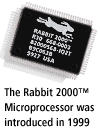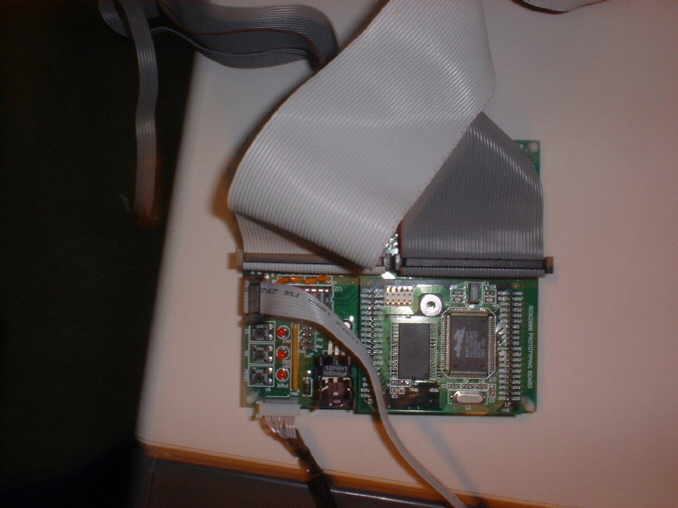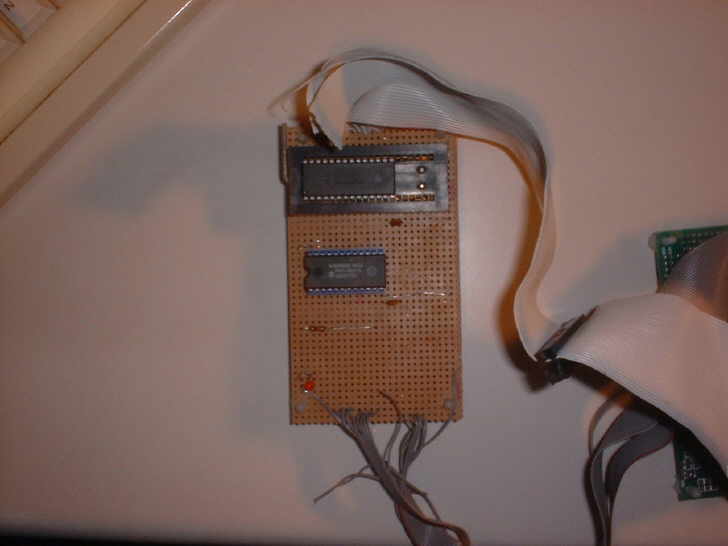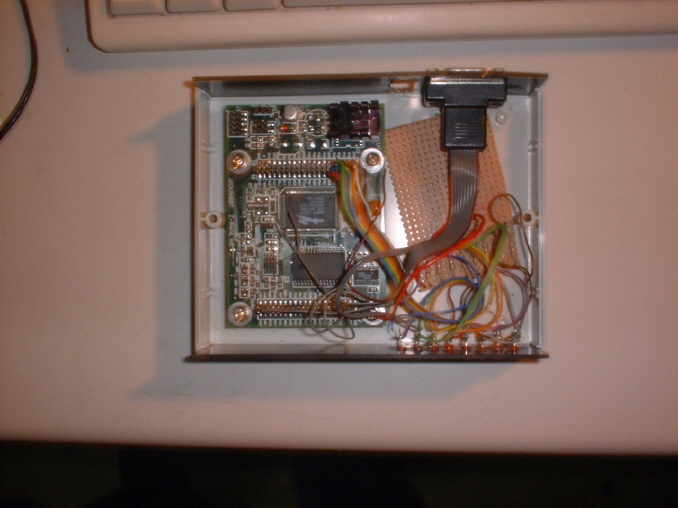 Rabbit 2000 Systems
Rabbit 2000 Systems

Introduction
The Rabbit 2000 is a highly integrated microprocessor from Rabbit
Semiconductor. You can buy complete development kits from as little
as $99, which includes a board with Rabbit 2000, RAM and FLASH, a prototyping
board, Dynamic C compiler and IDE and a programming cable. I bought the
first kit when it came out, but there are better ones now which include
an RTOS and TCP/IP library.
These kits are a great way to build small microprocessor controlled
equipment, without having to solder absoluely everything yourself. If you
want to mess about with homebrew computers with a minumum of fuss I can
recommend buying one of the kits, especially the TCP/IP version.
I have three systems, two BL1820 single board computers, plus a CM2020
core module. They all run versions of my command line interface (CLI)
monitor, R-SYS. Dynamic C differs from regular C in a number of ways,
and the IDE is quite usable, although I do have a number of criticisms:
-
There is only one source file, per project
-
Editor is a basic windows MDI application and has no syntax colouring as
yet
-
Controlling the linker is pretty much impossible and fine details of bootstrap
etc are abstracted. This is an advantage in some cases, but I found that
it could impose limitations on the type of software you can write.
-
Tech support is not fantastic, but is reasonable given the generally poor
standard of most tech. support.
These things aside there's plenty of good points:
-
Source level debugging and you can drop into assembly any time
-
Easy to in-line assembly language, particularly useful for the 20-bit addressing
instructions.
-
Flash programming, download and debug via a serial cable, which gives
similar functionality to J-TAG (TAP) emulators.
EEPROM Programmer
The most useful device in my collection is my EEPROM programmer, which
is constructed from a Rabbit 2000 CM2020 core module and a prototyping
board, connected to piece of stripboard which has a 24-pin socket for 2816
devices and a ZIF socket for 2864 devices. I can also use the sockets to
check 2kB and 8kB SRAMs, such as 6116, 4016 and 6264s.
Some Pictures:

EP8000 EEPROM Programmer Mainboard, showing Rabbit CM2020 core module
mounted on prototyping card

EP8000 ZIF socket board showing ZIF socket for 28 pin EEPROMs,
plus a 24 pin 2k RAM/EEPROM socket.

Another Rabbit 2000 based system, this time it's a BL1820 Single Board
Computer mounted in a small box. The eight LEDs,
visible at the bottom right of the picutre are just glued to the face
plate and form a "service port"allowing low level diagnostics.
Communication is via the serial connector on the back of the box, through
which you can expect an R-SYS prompt.



